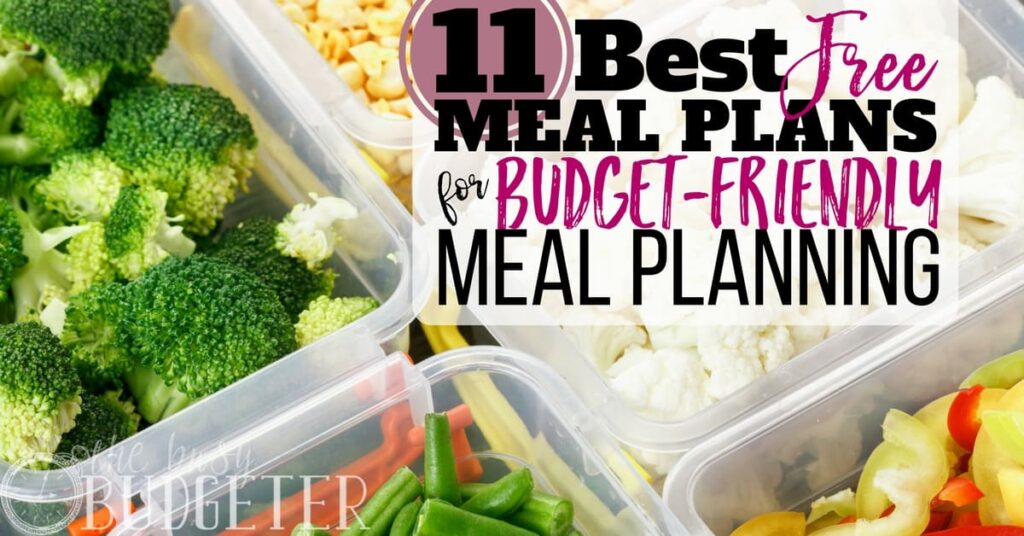Budget-Friendly Meal Plans

Nourishing on a Budget: Crafting Budget-Friendly Meal Plans for Health and Savings
Introduction:
In a world where expenses seem to multiply, maintaining a nutritious and budget-friendly meal plan can be a game-changer for both your well-being and your wallet. This article explores practical strategies for creating budget-friendly meal plans without compromising on nutritional value, ensuring that your plate is not only satisfying but also affordable.
1. Understanding the Basics: Building Blocks of a Budget-Friendly Meal Plan
Before delving into specific meal plans, it’s essential to understand the basics. A well-rounded budget-friendly meal typically includes a balance of protein, carbohydrates, healthy fats, and a variety of fruits and vegetables. These components not only provide essential nutrients but also contribute to satiety, helping you feel full and satisfied.
2. Meal Prep Mastery: Saving Time and Money
Meal prepping is a cornerstone of budget-friendly eating. By dedicating a few hours each week to preparing meals in advance, you can save time and money. Plan your weekly meals, create a shopping list, and batch-cook versatile ingredients like grains, proteins, and vegetables. This not only reduces the temptation to order takeout but also minimizes food waste.
3. Embracing Plant-Based Options: Wallet-Friendly and Nutrient-Rich
Incorporating more plant-based options into your meal plan can be a cost-effective and health-conscious choice. Legumes, beans, lentils, and grains such as quinoa and brown rice are affordable sources of protein and can form the basis of numerous satisfying meals. Explore the world of plant-based proteins to diversify your diet while keeping costs down.
4. Seasonal Sensibility: Fresh Produce without the Price Tag
Opting for seasonal produce is a smart strategy to maximize freshness while minimizing costs. Seasonal fruits and vegetables are often more abundant and, therefore, more affordable. Familiarize yourself with the seasonal availability of various produce items, and tailor your meal plans accordingly to enjoy the freshest ingredients at budget-friendly prices.
5. Smart Shopping Strategies: Mastering the Grocery Store Maze
Navigating the grocery store strategically can significantly impact your food budget. Make a list before heading to the store, stick to it, and avoid impulsive purchases. Consider purchasing generic or store-brand items, compare prices, and take advantage of sales and discounts. Planning ahead and buying in bulk for non-perishable items can also yield significant savings.
6. Meal Plan Templates: Weekly Guides for Success
Creating a weekly meal plan template can be a valuable tool for staying organized and within budget. Start by outlining breakfast, lunch, dinner, and snacks for each day. Include a variety of proteins, grains, and vegetables. Having a clear plan not only streamlines your shopping but also reduces the likelihood of ordering takeout on busy days.
7. Limiting Processed Foods: Cost-Effective and Health-Conscious Choices
Processed foods often come with a higher price tag and may lack the nutritional value of whole, unprocessed alternatives. Minimize your reliance on pre-packaged meals and snacks, opting instead for whole foods that can be prepared at home. Not only will this save money, but it also allows you to control the quality of ingredients in your meals.
8. Repurposing Leftovers: Waste Not, Want Not
Maximize your budget and minimize food waste by getting creative with leftovers. Turn last night’s roasted vegetables into a hearty soup, repurpose grilled chicken into a salad, or transform cooked grains into a flavorful stir-fry. With a bit of ingenuity, leftovers can become the foundation for entirely new, delicious meals.
9. DIY Snacks and Treats: Cost-Conscious Indulgences
Snacking can quickly add up in terms of both calories and costs. Instead of reaching for pre-packaged snacks, consider making your own. Homemade granola bars, trail mix, and yogurt parfaits are not only more budget-friendly but also allow you to control the ingredients, ensuring healthier and tastier alternatives.
10. Community Resources: Tapping into Local Support
Explore community resources that can further stretch your food budget. Farmers’ markets, community gardens, and food co-ops often offer fresh produce at lower prices. Additionally, some local organizations may provide assistance or discounts for those facing financial challenges, ensuring that everyone has access to affordable, nutritious meals.
FAQs: Frequently Asked Questions
Q1: Can I really save money by meal prepping? A1: Yes, meal prepping allows you to buy ingredients in bulk, reduces food waste, and minimizes the need for expensive takeout or dining out.
Q2: Are plant-based diets more budget-friendly? A2: Yes, plant-based diets can be cost-effective by emphasizing affordable sources of protein like beans, lentils, and grains.
Q3: How do I make a meal plan if I have dietary restrictions? A3: Research alternative ingredients that fit your dietary restrictions and explore recipes that cater to your specific needs while staying within budget.
Q4: Can I still eat healthy on a tight budget? A4: Absolutely. Focus on whole, unprocessed foods, buy in-season produce, and explore cost-effective protein sources like eggs, beans, and lentils.
Q5: Is it worth investing in a bulk membership for groceries? A5: If you have the storage space and can use items before they expire, buying in bulk can be cost-effective for non-perishable items.
Q6: How can I resist the temptation to order takeout? A6: Plan your meals in advance, have a well-stocked kitchen, and remind yourself of the financial and health benefits of sticking to your meal plan.
Q7: Are there affordable alternatives to expensive superfoods? A7: Yes, many affordable foods offer similar nutritional benefits. For example, oats, seeds, and frozen berries can be cost-effective alternatives to pricier superfoods.
Q8: Can I save money by shopping at local farmers’ markets? A8: Yes, farmers’ markets often offer fresh, seasonal produce at competitive prices, and supporting local vendors can be a great way to save money.
Q9: How do I handle picky eaters on a budget? A9: Involve picky eaters in meal planning, explore budget-friendly recipes together, and consider incorporating familiar ingredients into new dishes.
Q10: Are there government assistance programs for food that I can explore? A10: Yes, many countries have government assistance programs that provide support for individuals and families facing food insecurity. Check local resources for more information.
Conclusion:
Crafting a budget-friendly meal plan is not only a practical approach to managing finances but also a pathway to maintaining a healthy lifestyle. By embracing smart shopping, meal prepping, and creative cooking, you can nourish your body without breaking the bank. Remember, the key to success lies in planning, preparation, and a bit of culinary ingenuity. With these strategies, you can savor delicious and nutritious meals while enjoying the financial benefits of mindful eating.



